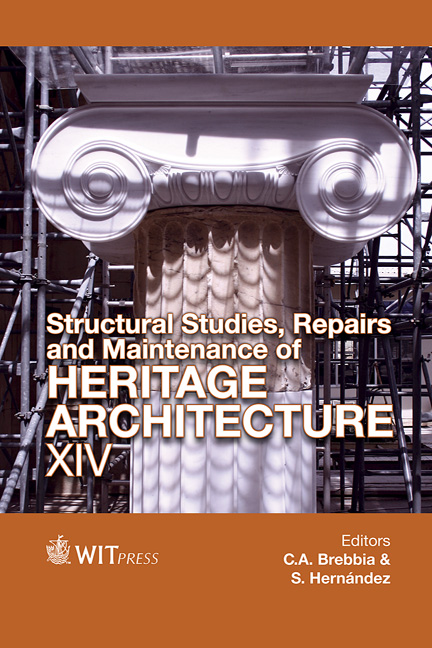The Influence Of Soil–foundation–structure Interaction On The Overall Behaviour And Diseases Of A Medieval Building In Pisa
Price
Free (open access)
Transaction
Volume
153
Pages
13
Page Range
393 - 405
Published
2015
Size
840 kb
Paper DOI
10.2495/STR150331
Copyright
WIT Press
Author(s)
S. Caprili, F. Mangini, W. Salvatore, G. Scarpelli, N. Squeglia
Abstract
The University of Pisa was established in 1343, but it was only in the 16th century that a specific venue, Palazzo La Sapienza, was built. The building was subjected to various modifications in relation to the users’ requirements, with the following irregular structural growth due the absence of a specific and organized global and general scheme. The present paper describes the investigations carried out on the construction and on the foundation soil to clarify their mutual interactions and explain some of the damage today affecting the building. A deep in situ experimental test campaign was executed to define masonry typology, dimensions of structural elements, mechanical properties of materials, geotechnical parameters of the soil and foundations’ geometry and masonry characteristics. Dynamic properties of the subsoil were investigated in order to properly define the local seismic action and the local influence of subsoil profile, necessary for the execution of safety assessments on the global model of the building.
Keywords
soil–structure–foundation interaction, cultural heritage, masonry buildings, local seismic response analysis, vulnerability assessment




